 Facebook
Facebook
 X
X
 Instagram
Instagram
 TikTok
TikTok
 Youtube
Youtube

Frustrated with what they said was the city council's inattention to their desire for more park space and city services, and dissatisfied by proliferating potholes, subdivisions, and high-rise waterfront hotels, they launched a petition drive to force a change in the way the city elected its councilmembers.
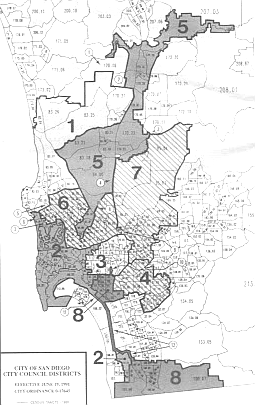
At the time, hundreds of thousands of dollars — much of the money from real estate development interests and national hotel chains that wanted to expand on public land here — was pouring into the campaign war chests of councilmembers, and little serious opposition was emerging to take on the incumbents. Reformers argued that the city was being taken over by the special interests, and they thought they had a solution.
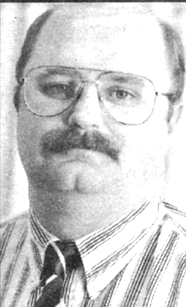
Steve Erie, a professor of political science at UCSD, was an eyewitness to the beginning. 'I was a participant observer," Erie recalls. 'I came in at the invitation of Barb Bamberger, who at that point was the coordinator of the Sierra Club, and the organizing meeting was at the Sierra Club headquarters in Balboa Park. Of course, this was being pushed by the Sierra Club and John Hartley [in December 1987], and it was a way to control the power of developers' money in local elections. They saw that you can run much cheaper campaigns, labor intensive, a lot of citizen volunteers, if you had district elections. Remember, a big issue in the late 1980s, before the economy went in the toilet, was too much growth and too much influence by developers in local city politics."
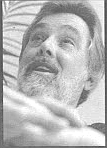
In October 1988, at a rally in a tiny North Park playground said to be symbolic of the lack of city services and facilities in blue-collar neighborhoods, petition organizer Jim Bliesner told reporters that under the old system, “the power of the individual vote is watered down, diluted.” As volunteers fanned out across the city to gather signatures, the battle was joined by Channel 10 news reporter Herb Hawthorne, then president of the San Diego Urban League, an advocate for black and minority causes. “It’s not just a black or Hispanic issue,” Hawthorne told the Union-Tribune. “People all over the city aren’t receiving the kind of representation they deserve. District election has to do with the enfranchisement of all people.”
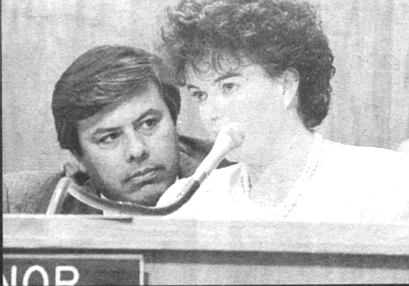
As the signature count mounted, the Chicano Federation filed a lawsuit in federal court, arguing that the then-current way of electing the city council by a district-only primary—-which first narrowed the field of candidates to two, who then faced a citywide runoff — discriminated against minorities. The reformers demanded that each city council member be elected solely by the voters of the district they were to represent.
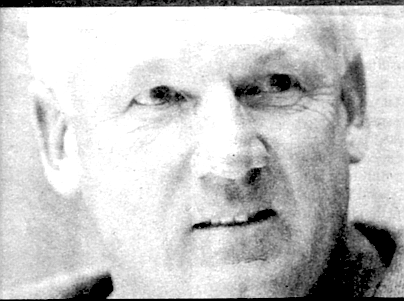
“The nub of the question is whether power in San Diego will remain concentrated or be more widely shared,” declared Herb Fredman in a column written for the Union-Tribune, outlining the classic arguments for what came to be known as district elections. “Citywide campaigns in a metropolis of more than one million persons are costly. With San Diego’s legal-contribution limits, candidates, to win, must have substantial insider support — which historically comes from the development industry — or be personally wealthy.
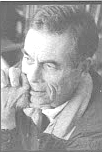
“Foes of Proposition E say its passage would bring parochialism to the council — and destroy a ‘citywide’ viewpoint by members. They say this without blushing, despite a council constantly feuding over district concerns.”
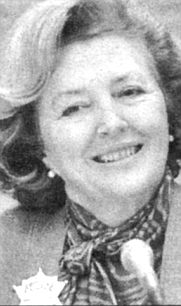
In a letter to the editor, grassroots activist Hans Jovishoff added, “Few voters know their own council person, let alone those in other districts. As a result, they have to rely on advertising pieces, radio and TV ads, and last-minute hit pieces. It has been shown, time and again, that because of this, persons winning a large majority in their districts have been defeated in the citywide contest by well-financed opponents. As you well know, these opponents are not grass roots candidates, but members of the power structure.”

Glenn Keene, another letter writer, declared: “San Diego city government has become a government of the rich, by the rich, and for the rich. The cause of this perversion of the American ideal is San Diego’s system of citywide elections for city council. The cure is the district-election initiative. Candidates of average means, most of us, can’t afford to buy an election and are excluded from what is supposed to be a democratic system.”
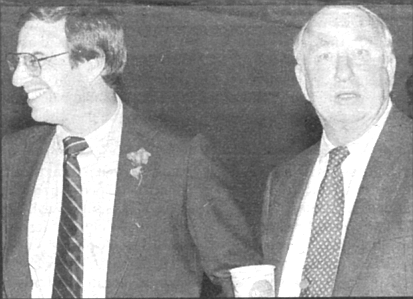
Other supporters were even more visceral. “By signing the ballot argument against district elections, Mayor O’Connor has shown her true colors as a member of the ruling establishment who control our city,” wrote Jim Jacobson. “The pretended guise of populism wears thin, Maureen! The city’s power holders squawk that we would be victims of machine politics with district elections. I can’t imagine a more corrupt system than the present one, where a candidate’s only chance of being elected is with hundreds of thousands in developer and big-shot money needed to run television campaigns citywide. In San Diego, money talks and the greedy land speculators rule.”
Bob Glaser, a political consultant who favored district elections, told a reporter that it would mean the end of big-spending council campaigns. “You wouldn’t see someone spend $400,000 on a district-only race. Sure you could still spend $100,000. But if you spent the amount people spend now on citywide races, there would be a backlash. People would say, ‘This guy is trying to buy the election.’ There would be a natural limiting effect.”
Opponents, led by O’Connor and the late Bill Cleator, a city councilman who once ran against O’Connor for mayor, argued that district elections would lead to pork-barrel policies at city hall. City Councilman Ron Roberts, another opponent, predicted that the measure would do the opposite of what its proponents claimed. “I would think district elections would tend to give the incumbents an even stronger position.”
Another prediction was made by political consultant Dick Dresner, who worked for Roberts and Governor Pete Wilson, among others, and who also opposed the measure; “I think the mayor has the most to lose.” He explained that, by making the council less dependent on the mayor for political money, it would end her influence of its members. That prophecy, many say, has come back to haunt O’Connor’s successor, current mayor Susan Golding, especially in her star-crossed effort to build a downtown central library. Fellow councilmembers retreated en masse from that proposal after Golding’s dropout from the U.S. Senate race.
Going into the November 1988 election, polls showed that district elections were favored by a majority of voters, but the outcome was much closer. When the final vote was counted, district elections had squeaked by with a razor-thin citywide margin: 51.1 percent yes to 48.9 percent no. Closer analysis of the vote showed that the measure was favored by wide margins in Districts 3, 4, and 8, minority districts including much of working-class Midcity, Southeast San Diego, and San Ysidro. By contrast, voters in Districts 5, 6, and 7, which include Clairemont Mesa, voted against the proposal. District 2, covering Point Loma, opposed the measure by just 137 votes, and District 1, including La folia, favored it by 187 votes.
Thus, San Diego embarked on its experiment with district elections. But how has it gone so far? Has it solved the problem of influence peddling and laundered campaign contributions from special interests? Critics say no, pointing to the soaring cost of city council elections and the lack of serious opposition in most of the races up for grabs this year. They also point to the stadium-financing debacle and the mishandling of the Chargers seat guarantee as proof that the district election system has actually acted to insulate councilmembers from citywide scrutiny and accountability.
Instead, they argue, the council now spends its public-meeting time tending to small-time pork-barrel projects, such as small parks and fire stations, which draw the attention and clamor of neighborhood activists in each district. In public, the council spends little time weighing the merits of larger spending issues such as the stadium, convention center, and the toilet-to-tap sewage-recycling project, which are unlikely to provoke controversy until they go awry and it’s too late to fix them.
Critics say the council regularly violates the public-meetings act by holding secret sessions on controversial issues favored by special interests. In short, critics claim district elections are the worst of all worlds. Councilmembers still rely on hundreds of thousands of dollars’ worth of handouts from developers, city hotel leaseholders, and sports-team owners and are less responsible for their actions than ever.
“It’s produced exactly the effect that everybody thought it would, and that is to make members of the city council even more concerned about their neighborhoods and their districts,” says UCSD professor Erie. “It’s made decision-making more parochial. Certainly the whole experience of district elections around the country is that it turns the city council into a pork-barrel operation. It’s the rule of eight. An awful lot of city services are divided by the number of districts...an awful lot of city services get allocated basically on a proportional basis.”
Asked whether that was a desirable result, Erie responds, “No, it wasn’t. And the question is, has it reduced the power of developer money? Developers learn how to play the game, including the recall game. Developers are very smart about these kinds of things. I think it has moderately reduced, even slightly reduced their influence, but the power of money is still there, even with lower-cost district elections.”
But if a city council campaign is theoretically cheaper and easier to mount, why aren’t more candidates emerging to run? Two years ago, two long-term incumbents, Barbara Warden and Harry Mathis, ran unopposed. This year, although some opposition is emerging to the reelection efforts of Byron Wear and Juan Vargas, the only big name to make noises about challenging an incumbent, in this case Valerie Stallings, has been ex-councilman and Chargers contract foe Bruce Henderson. So far, George Stevens, the fourth member of the council facing reelection, remains unopposed. With the final filing date looming on March 5, the lack of opposition has nonplussed many in light of the low regard the city council has come to be viewed with, but Erie says he is not surprised.
He remembers that district-election backers were counting on their reform to encourage more candidates. “We thought it would trigger an increase in participation and turnout, at least that was the kind of argument being made by the proponents. There was a slight upturn right afterwards, but since then I think we’ve just gotten into a holding pattern or continued the longterm decline of the 1990s.
“San Diego has always had what I call a depressed civic culture,” explains Erie. “We frequently act like a Santa Barbara South, with a Father Knows Best [attitude], [trusting of the] elite decision-makers downtown. It’s still a small town in many ways, with the decisionmakers making the decisions and the citizens just sitting back passively. This is not a participatory city. It’s a spectator sport at best.”
There remain some strong supporters of district elections. Barbara Bamberger, a Sierra Club activist at the time she played a key role in the district-elections campaign and now an environmental staffer with the city of Chula Vista, says the system has proven out well. And she says that the lack of candidates filing for council elections can’t be blamed on the reform measure.
“I think, to be honest with you, that it’s more of a problem with the perception of public officials that the public has— that it’s not the greatest job in the world. I don’t necessarily know if it would be that much different if we had citywide elections. I don’t know what the number of people are who are running now versus then.” The worst criticism that surfaced during the campaign, Bamberger remembers, was that “people would stop caring about city issues and that city issues would not be addressed by the council. I just don’t see that as being the case.” The fact that the stadium issue smoldered for months before exploding into a peoples’ referendum and two lawsuits showed that there are mechanisms other than district elections for addressing citywide concerns, even when individual councilmembers duck or mishandle the big issues. “The opponents who argued against district elections, their reasoning for arguing against it was that the focus would be taken away from citywide issues because of the nature of district elections being district only,” Bamberger observes. “The detractor people who were arguing against were saying it will become parochial, and I think to some degree, probably, that there is an element of parochialism when you decentralize.
“But when you look at the major issues of the last two years — the stadium, the convention center, and other issues — those are very citywide issues, and people are still concerned about city issues.”
As for the controversial, hush-hush way the city council initially handled the stadium expansion and Chargers’ ticket guarantee, Bamberger adds, “I don’t know if that’s necessarily related to whether it was citywide elections or district elections. You’d think that the district, in that scenario, would be more accountable, [but] I think that issue is so way beyond the election system, and that the whole way the project was presented to the public was an educational issue of how are we presenting information, and are we providing this information to the public, and that’s why the public said, ‘Wait a second, what’s really going on here?’
“I think, environmentally, definitely, there has been much greater attention paid to what the public thought about the development projects in their neighborhoods than there may otherwise had been,” Bamberger says. She argues that pork-barrel politics may not be all bad. “I think that is part of the territory. I don’t disagree that that happens because I think that’s true. But in offense, that’s what representative government is to some degree. That is literally what representative government is.”
Both Erie and Bamberger are quick to give John Hartley, a Democrat and North Park business broker, much of the credit for coming up with the idea for the district-elections. Hartley argues that money politics has proliferated in the years since his council days. He and other observers note that despite district elections, the city council has been hit with seven major money-laundering scandals, in which developers and city lessees have been caught using employees as fronts to give money to city council campaigns. In each case, the violators have paid a fine, and the city council recipients have claimed they didn’t know the true source of the money.
The series of scandals has become so notable that a federal judge in Sacramento recently cited them as an example of why contribution limits don’t work to limit corruption. (The city of San Diego officially imposes a $250 per person limit on donations to city council candidates; many corporations make each of their employees give the maximum, which is legal, as long as the employees aren’t reimbursed.)
“The Democrats on the council are almost indistinguishable from the Republicans,” says Hartley. “We’re not getting people who really have some sort of a philosophical base other than a personal career, it’s like careerism. They get on, they go along, they get taken care of, they don’t get attacked, they go with the flow, rather than people there who are fighting for something. I mean, they don’t take votes that are unpopular votes, they don’t buck the establishment.”
Like the others, Hartley bemoans the lack of grassroots candidates, whom district elections were supposed to encourage. “What we haven’t seen is candidates getting out and canvassing, going door-to-door, say, a year early. I hear sentiments that people don’t want to walk, they don’t want to go door-to-door, but that’s the only way to win elections, I think, with shoe leather, unless you have a lot of money.
“I’m a little cynical here about even getting people elected to the council, so I’m looking at this referendum that Henderson brought forth as an option. Maybe we should have a citizens’ group that does referendums. If you just can’t trust your elected people, no matter who they are, then maybe what you should have is some kind of citizens’ group that can just put a brake on them, all the time. That’s kind of where my thoughts are going.”
Of district elections, he now concludes, “It’s good and bad. It wasn’t that whole new dawn. It did a lot of what we wanted it to. The district can now hold a person accountable. Whether they’re doing it is another story.”


Frustrated with what they said was the city council's inattention to their desire for more park space and city services, and dissatisfied by proliferating potholes, subdivisions, and high-rise waterfront hotels, they launched a petition drive to force a change in the way the city elected its councilmembers.

At the time, hundreds of thousands of dollars — much of the money from real estate development interests and national hotel chains that wanted to expand on public land here — was pouring into the campaign war chests of councilmembers, and little serious opposition was emerging to take on the incumbents. Reformers argued that the city was being taken over by the special interests, and they thought they had a solution.

Steve Erie, a professor of political science at UCSD, was an eyewitness to the beginning. 'I was a participant observer," Erie recalls. 'I came in at the invitation of Barb Bamberger, who at that point was the coordinator of the Sierra Club, and the organizing meeting was at the Sierra Club headquarters in Balboa Park. Of course, this was being pushed by the Sierra Club and John Hartley [in December 1987], and it was a way to control the power of developers' money in local elections. They saw that you can run much cheaper campaigns, labor intensive, a lot of citizen volunteers, if you had district elections. Remember, a big issue in the late 1980s, before the economy went in the toilet, was too much growth and too much influence by developers in local city politics."

In October 1988, at a rally in a tiny North Park playground said to be symbolic of the lack of city services and facilities in blue-collar neighborhoods, petition organizer Jim Bliesner told reporters that under the old system, “the power of the individual vote is watered down, diluted.” As volunteers fanned out across the city to gather signatures, the battle was joined by Channel 10 news reporter Herb Hawthorne, then president of the San Diego Urban League, an advocate for black and minority causes. “It’s not just a black or Hispanic issue,” Hawthorne told the Union-Tribune. “People all over the city aren’t receiving the kind of representation they deserve. District election has to do with the enfranchisement of all people.”

As the signature count mounted, the Chicano Federation filed a lawsuit in federal court, arguing that the then-current way of electing the city council by a district-only primary—-which first narrowed the field of candidates to two, who then faced a citywide runoff — discriminated against minorities. The reformers demanded that each city council member be elected solely by the voters of the district they were to represent.

“The nub of the question is whether power in San Diego will remain concentrated or be more widely shared,” declared Herb Fredman in a column written for the Union-Tribune, outlining the classic arguments for what came to be known as district elections. “Citywide campaigns in a metropolis of more than one million persons are costly. With San Diego’s legal-contribution limits, candidates, to win, must have substantial insider support — which historically comes from the development industry — or be personally wealthy.

“Foes of Proposition E say its passage would bring parochialism to the council — and destroy a ‘citywide’ viewpoint by members. They say this without blushing, despite a council constantly feuding over district concerns.”

In a letter to the editor, grassroots activist Hans Jovishoff added, “Few voters know their own council person, let alone those in other districts. As a result, they have to rely on advertising pieces, radio and TV ads, and last-minute hit pieces. It has been shown, time and again, that because of this, persons winning a large majority in their districts have been defeated in the citywide contest by well-financed opponents. As you well know, these opponents are not grass roots candidates, but members of the power structure.”

Glenn Keene, another letter writer, declared: “San Diego city government has become a government of the rich, by the rich, and for the rich. The cause of this perversion of the American ideal is San Diego’s system of citywide elections for city council. The cure is the district-election initiative. Candidates of average means, most of us, can’t afford to buy an election and are excluded from what is supposed to be a democratic system.”

Other supporters were even more visceral. “By signing the ballot argument against district elections, Mayor O’Connor has shown her true colors as a member of the ruling establishment who control our city,” wrote Jim Jacobson. “The pretended guise of populism wears thin, Maureen! The city’s power holders squawk that we would be victims of machine politics with district elections. I can’t imagine a more corrupt system than the present one, where a candidate’s only chance of being elected is with hundreds of thousands in developer and big-shot money needed to run television campaigns citywide. In San Diego, money talks and the greedy land speculators rule.”
Bob Glaser, a political consultant who favored district elections, told a reporter that it would mean the end of big-spending council campaigns. “You wouldn’t see someone spend $400,000 on a district-only race. Sure you could still spend $100,000. But if you spent the amount people spend now on citywide races, there would be a backlash. People would say, ‘This guy is trying to buy the election.’ There would be a natural limiting effect.”
Opponents, led by O’Connor and the late Bill Cleator, a city councilman who once ran against O’Connor for mayor, argued that district elections would lead to pork-barrel policies at city hall. City Councilman Ron Roberts, another opponent, predicted that the measure would do the opposite of what its proponents claimed. “I would think district elections would tend to give the incumbents an even stronger position.”
Another prediction was made by political consultant Dick Dresner, who worked for Roberts and Governor Pete Wilson, among others, and who also opposed the measure; “I think the mayor has the most to lose.” He explained that, by making the council less dependent on the mayor for political money, it would end her influence of its members. That prophecy, many say, has come back to haunt O’Connor’s successor, current mayor Susan Golding, especially in her star-crossed effort to build a downtown central library. Fellow councilmembers retreated en masse from that proposal after Golding’s dropout from the U.S. Senate race.
Going into the November 1988 election, polls showed that district elections were favored by a majority of voters, but the outcome was much closer. When the final vote was counted, district elections had squeaked by with a razor-thin citywide margin: 51.1 percent yes to 48.9 percent no. Closer analysis of the vote showed that the measure was favored by wide margins in Districts 3, 4, and 8, minority districts including much of working-class Midcity, Southeast San Diego, and San Ysidro. By contrast, voters in Districts 5, 6, and 7, which include Clairemont Mesa, voted against the proposal. District 2, covering Point Loma, opposed the measure by just 137 votes, and District 1, including La folia, favored it by 187 votes.
Thus, San Diego embarked on its experiment with district elections. But how has it gone so far? Has it solved the problem of influence peddling and laundered campaign contributions from special interests? Critics say no, pointing to the soaring cost of city council elections and the lack of serious opposition in most of the races up for grabs this year. They also point to the stadium-financing debacle and the mishandling of the Chargers seat guarantee as proof that the district election system has actually acted to insulate councilmembers from citywide scrutiny and accountability.
Instead, they argue, the council now spends its public-meeting time tending to small-time pork-barrel projects, such as small parks and fire stations, which draw the attention and clamor of neighborhood activists in each district. In public, the council spends little time weighing the merits of larger spending issues such as the stadium, convention center, and the toilet-to-tap sewage-recycling project, which are unlikely to provoke controversy until they go awry and it’s too late to fix them.
Critics say the council regularly violates the public-meetings act by holding secret sessions on controversial issues favored by special interests. In short, critics claim district elections are the worst of all worlds. Councilmembers still rely on hundreds of thousands of dollars’ worth of handouts from developers, city hotel leaseholders, and sports-team owners and are less responsible for their actions than ever.
“It’s produced exactly the effect that everybody thought it would, and that is to make members of the city council even more concerned about their neighborhoods and their districts,” says UCSD professor Erie. “It’s made decision-making more parochial. Certainly the whole experience of district elections around the country is that it turns the city council into a pork-barrel operation. It’s the rule of eight. An awful lot of city services are divided by the number of districts...an awful lot of city services get allocated basically on a proportional basis.”
Asked whether that was a desirable result, Erie responds, “No, it wasn’t. And the question is, has it reduced the power of developer money? Developers learn how to play the game, including the recall game. Developers are very smart about these kinds of things. I think it has moderately reduced, even slightly reduced their influence, but the power of money is still there, even with lower-cost district elections.”
But if a city council campaign is theoretically cheaper and easier to mount, why aren’t more candidates emerging to run? Two years ago, two long-term incumbents, Barbara Warden and Harry Mathis, ran unopposed. This year, although some opposition is emerging to the reelection efforts of Byron Wear and Juan Vargas, the only big name to make noises about challenging an incumbent, in this case Valerie Stallings, has been ex-councilman and Chargers contract foe Bruce Henderson. So far, George Stevens, the fourth member of the council facing reelection, remains unopposed. With the final filing date looming on March 5, the lack of opposition has nonplussed many in light of the low regard the city council has come to be viewed with, but Erie says he is not surprised.
He remembers that district-election backers were counting on their reform to encourage more candidates. “We thought it would trigger an increase in participation and turnout, at least that was the kind of argument being made by the proponents. There was a slight upturn right afterwards, but since then I think we’ve just gotten into a holding pattern or continued the longterm decline of the 1990s.
“San Diego has always had what I call a depressed civic culture,” explains Erie. “We frequently act like a Santa Barbara South, with a Father Knows Best [attitude], [trusting of the] elite decision-makers downtown. It’s still a small town in many ways, with the decisionmakers making the decisions and the citizens just sitting back passively. This is not a participatory city. It’s a spectator sport at best.”
There remain some strong supporters of district elections. Barbara Bamberger, a Sierra Club activist at the time she played a key role in the district-elections campaign and now an environmental staffer with the city of Chula Vista, says the system has proven out well. And she says that the lack of candidates filing for council elections can’t be blamed on the reform measure.
“I think, to be honest with you, that it’s more of a problem with the perception of public officials that the public has— that it’s not the greatest job in the world. I don’t necessarily know if it would be that much different if we had citywide elections. I don’t know what the number of people are who are running now versus then.” The worst criticism that surfaced during the campaign, Bamberger remembers, was that “people would stop caring about city issues and that city issues would not be addressed by the council. I just don’t see that as being the case.” The fact that the stadium issue smoldered for months before exploding into a peoples’ referendum and two lawsuits showed that there are mechanisms other than district elections for addressing citywide concerns, even when individual councilmembers duck or mishandle the big issues. “The opponents who argued against district elections, their reasoning for arguing against it was that the focus would be taken away from citywide issues because of the nature of district elections being district only,” Bamberger observes. “The detractor people who were arguing against were saying it will become parochial, and I think to some degree, probably, that there is an element of parochialism when you decentralize.
“But when you look at the major issues of the last two years — the stadium, the convention center, and other issues — those are very citywide issues, and people are still concerned about city issues.”
As for the controversial, hush-hush way the city council initially handled the stadium expansion and Chargers’ ticket guarantee, Bamberger adds, “I don’t know if that’s necessarily related to whether it was citywide elections or district elections. You’d think that the district, in that scenario, would be more accountable, [but] I think that issue is so way beyond the election system, and that the whole way the project was presented to the public was an educational issue of how are we presenting information, and are we providing this information to the public, and that’s why the public said, ‘Wait a second, what’s really going on here?’
“I think, environmentally, definitely, there has been much greater attention paid to what the public thought about the development projects in their neighborhoods than there may otherwise had been,” Bamberger says. She argues that pork-barrel politics may not be all bad. “I think that is part of the territory. I don’t disagree that that happens because I think that’s true. But in offense, that’s what representative government is to some degree. That is literally what representative government is.”
Both Erie and Bamberger are quick to give John Hartley, a Democrat and North Park business broker, much of the credit for coming up with the idea for the district-elections. Hartley argues that money politics has proliferated in the years since his council days. He and other observers note that despite district elections, the city council has been hit with seven major money-laundering scandals, in which developers and city lessees have been caught using employees as fronts to give money to city council campaigns. In each case, the violators have paid a fine, and the city council recipients have claimed they didn’t know the true source of the money.
The series of scandals has become so notable that a federal judge in Sacramento recently cited them as an example of why contribution limits don’t work to limit corruption. (The city of San Diego officially imposes a $250 per person limit on donations to city council candidates; many corporations make each of their employees give the maximum, which is legal, as long as the employees aren’t reimbursed.)
“The Democrats on the council are almost indistinguishable from the Republicans,” says Hartley. “We’re not getting people who really have some sort of a philosophical base other than a personal career, it’s like careerism. They get on, they go along, they get taken care of, they don’t get attacked, they go with the flow, rather than people there who are fighting for something. I mean, they don’t take votes that are unpopular votes, they don’t buck the establishment.”
Like the others, Hartley bemoans the lack of grassroots candidates, whom district elections were supposed to encourage. “What we haven’t seen is candidates getting out and canvassing, going door-to-door, say, a year early. I hear sentiments that people don’t want to walk, they don’t want to go door-to-door, but that’s the only way to win elections, I think, with shoe leather, unless you have a lot of money.
“I’m a little cynical here about even getting people elected to the council, so I’m looking at this referendum that Henderson brought forth as an option. Maybe we should have a citizens’ group that does referendums. If you just can’t trust your elected people, no matter who they are, then maybe what you should have is some kind of citizens’ group that can just put a brake on them, all the time. That’s kind of where my thoughts are going.”
Of district elections, he now concludes, “It’s good and bad. It wasn’t that whole new dawn. It did a lot of what we wanted it to. The district can now hold a person accountable. Whether they’re doing it is another story.”
Comments